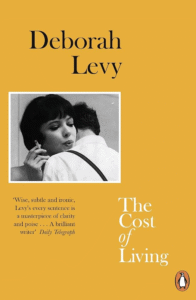Beyond the Thorns: A Court of Thorns and Roses as a Feminist Reclamation of Fairytales

Sarah J. Maas’s A Court of Thorns and Roses isn’t just a dark retelling of Beauty and the Beast; it’s a feminist dismantling of the fairytale trope. Maas utilizes the familiar framework as a springboard to explore the complexities of trauma, self-discovery, and a heroine who actively defies the limitations placed upon her.
A Fae Bargain: Hunting for Survival, Not Love
Feyre Archeron isn’t your typical damsel-in-distress. Thrust into a fantastical realm to save her family, she becomes a provider, a hunter, defying the notion of feminine weakness. The initial allure of the Spring Court, mirroring the enchanted castle, quickly fades. Instead of finding a Beast yearning for love, Feyre encounters a controlling Tamlin, whose court is shrouded in silence and a sinister secret. Maas masterfully dismantles the romanticized notion of Beauty willingly trapped with the Beast. Instead, Feyre endures a brutal year marked by emotional and physical abuse disguised as a luxurious captivity. The “curse” plaguing the land becomes a metaphor for the toxicity that permeates Tamlin’s court.
Breaking the Curse Within: Scars as Symbols of Strength
Feyre’s strength lies in her fierce independence and unwavering love for her family. She doesn’t wait for a prince to rescue her. Instead, the trials imposed by Tamlin, designed to break her spirit, inadvertently become the catalyst for her transformation. She hones her hunting and fighting skills, her resourcefulness turning into defiance. This journey isn’t just about survival; it’s about self-discovery. She redefines beauty beyond physical appearance. Feyre’s scars, a constant reminder of her trauma, become a badge of honor, a symbol of her resilience. She reclaims her agency, not needing a prince to break a curse, but through her own unwavering spirit and cunning.
Love and Respect: A Partnership Forged in Shared Scars
The arrival of Rhysand, a mysterious High Lord with a troubled past, disrupts the fragile illusion of Feyre’s existence. Unlike Tamlin’s possessive “love,” Rhysand offers respect and understanding. He recognizes the darkness within her, a reflection of his own, and offers camaraderie rather than control. Their bond is forged in shared trauma and mutual respect, a stark contrast to the power dynamic with Tamlin. Feyre is not obligated to choose love; she has the agency to make her own choices. Their connection grows organically, based on honesty, shared suffering, and a deep understanding. This exploration of a healthier, more nuanced form of love subverts the fairytale trope of instant attraction and blind devotion.
A Heroine Reborn: Choosing Her Own Destiny
By the novel’s end, Feyre emerges not as a rescued maiden but as a survivor, scarred yet empowered. She carries the weight of her experiences, but her strength lies in her refusal to be defined by them. A Court of Thorns and Roses transcends the limitations of the fairytale genre, offering a complex heroine who challenges societal expectations and carves her own path. The ending is not a happily-ever-after tied to a romantic relationship. It’s a promise of a future where Feyre, forever changed, chooses her own destiny, ready to face whatever challenges lie ahead. This is a story about a woman who learns to heal, to fight, and to love on her own terms, a powerful message that resonates deeply with readers seeking a heroine who defies definition.




















